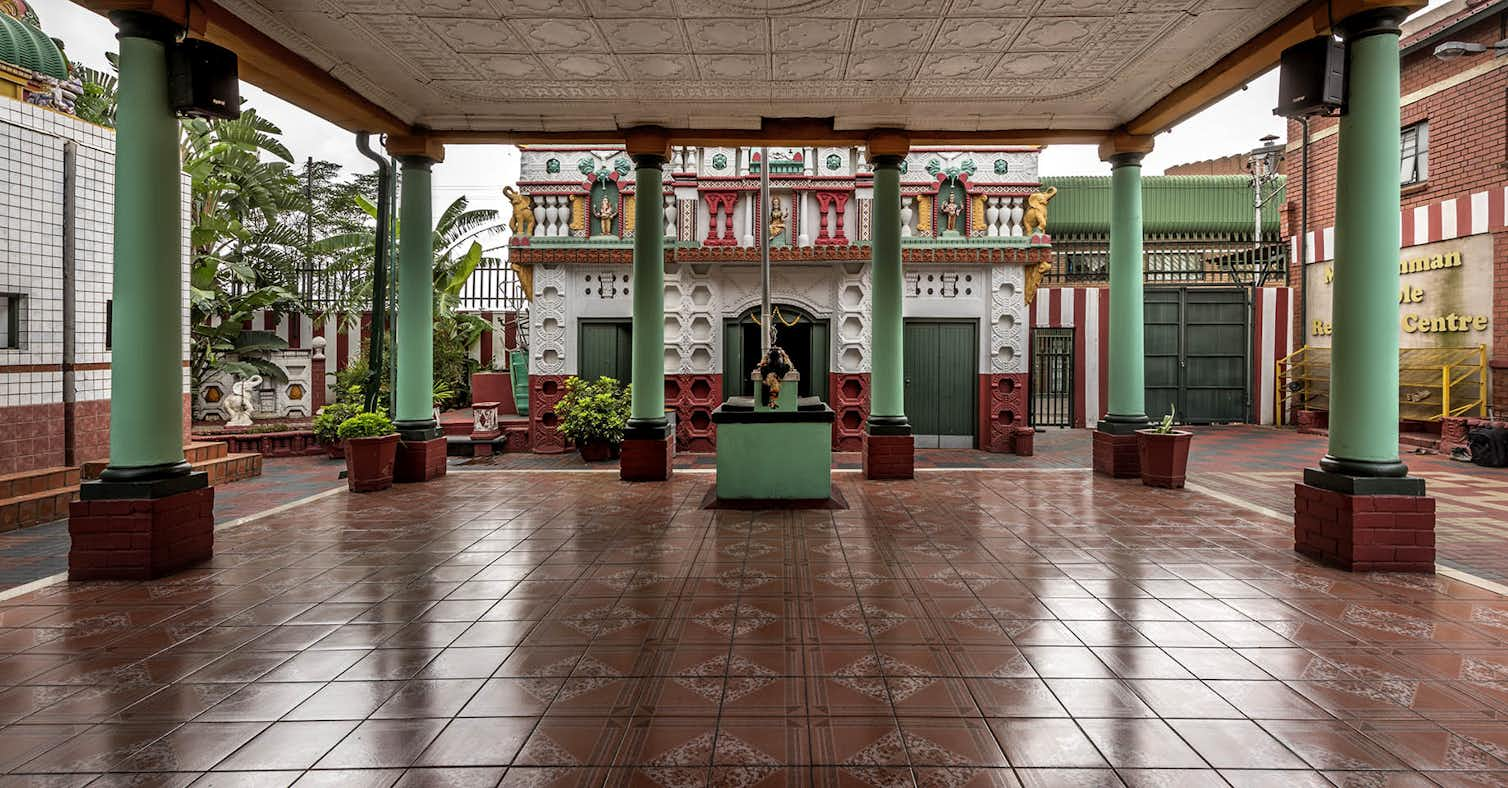
PRETORIA, SOUTH AFRICA, March 22, 2020 : Apart from Pretoria’s legacy of grand institutional buildings, South Africa’s capital city and historical seat of the apartheid government, also contains some unique architectural masterpieces that have been built and cared for by various religious communities. These buildings reflect the stories, traditions and resilience of diverse community groups. Perhaps the most remarkable of the religious sites, though, is the Mariamman Temple, the home of Pretoria’s Tamil League and located in the historical and turbulent suburb of Marabastad. The Mariamman Temple is a small complex of buildings constructed from 1928 onwards within the fine urban grain of the Asiatic Bazaar. This is a historical part of Marabastad that managed to survive apartheid-era clearances in the area. A visible landmark is the gopuram or entrance portal on 6th Street, considered the most impressive of its kind in South Africa. Especially since its renovation in the early 1990s and the subsequent reintroduction of color and detail by the Tamil community.
Groups from India arrived in the Natal Colony on South Africa’s east coast as indentured laborers as early as the 1860s, and settled in the Pretoria region in central South Africa from the 1880s onwards. After its establishment in the early 1890s, the Asiatic Bazaar became home to most of Pretoria’s Indian communities. The Tamil-speaking Hindu community founded the Pretoria Tamil League here in the early 20th century. They developed the temple complex as the heart of their community life and still act as custodians. The temple was dedicated to the Goddess Mariamman. It was built in the south Indian Dravida Style known for its large tiered gopurams (entrance portals). The Tamil community built a new temple when they were relocated to Laudium. But the Mariamman Temple remained in use, even as parts of the building fell into disrepair. In the early 1990s, an academically researched restoration was executed by architects Schalk le Roux and Nico Botes.





